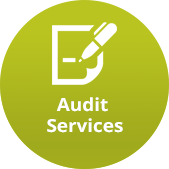February 2015 Newsletter
In this edition:
Small business, big risks
Consider the vulnerability of your financial situation

With business and personal debts to their name, small business owners have a lot of reasons to protect themselves financially. So why do so many ignore the risks?
When you're a small business owner, you pour your heart and soul into your business. And why wouldn't you – it's yours!
But what many small business owners fail to think about is the vulnerability of their financial situation.
Having so much at stake, both emotionally and financially, might be great for motivation. But it's not so great if something happens to you and you can't work.
And it can be even more devastating if you've got a family depending on you.
Bridge the protection gap
According to a 2006 survey by the Investment and Financial Services Council (FSC), less than half of small business owners feel they have adequate cover [1].
So if they know they're not properly covered, why aren't they doing something about it?
One of the reasons is that there's a perception insurance is too expensive.
But think about the sort of money you'd lose if you couldn't work for a few months. Or worse if you could never work again. It certainly helps put the cost of insurance into perspective.
It could even reduce your tax bill
Income protection insurance is one of the most relevant types of cover for everyone, including small business owners. It can replace up to 80% of your income if you can't work because of sickness or injury.
In the FSC survey, 95% of small business owners said they were aware of what income protection was, but 56% thought it was too expensive.
So cost is obviously a big reason for the lack of protection.
But the fact 47% of respondents did not know that income protection premiums were tax-deductible shows there's a lack of understanding around how much insurance actually costs.
Business expenses insurance – which covers your fixed business expenses like rent, electricity and non-income producing staff wages if you can't work because of sickness or injury – is also tax-deductible.
So by combining these two types of policies you can cover your work and personal expenses. And potentially reduce your tax bill.
How much does it actually cost?
Let's take the example of a 37-year old male plumber who earns $80,000 pa. He takes out:
*an income protection policy to cover 75% of his income (or $5,000 per month), and
* a business overheads policy to cover $5,000 per month of fixed business expenses.
His total premium before tax is $3,131. But because his premiums are tax-deductible, his after-tax premium reduces by 34.5% (his marginal tax rate) to $2,051. At about $40 per week, that's the equivalent of a take-away pizza and a six-pack of beer each week.
Source: BT Life, based on a non-smoker taking out an Endorsed Agreed Value Income Protection Plus policy, and an Indemnity Contract Business Overheads policy, both with 30-day waiting periods and stepped premiums paid annually.
Get the cover you need
The best way to find out what cover you need is to speak to a financial adviser. They can help you get the right cover, and make sure it's structured in a way that makes it as cost-effective as possible. If you would like to speak to a financial adviser about this please contact our office on 02 9899 3044 to be put in contact with our insurance specialist Debbie Adams.
Everyone needs insurance. But few people need it more than small business owners. So make it your business to get the advice, and the cover, you need.
Note: This information is of a general nature only and has been provided without taking account of your objectives, financial situation or needs. Because of this, you should consider whether the information is appropriate in light of your particular objectives, financial situation and needs.
__________
1. 'Investigating Income Protection insurance in Australia' –FSC, July 2006.
Contact details
Suite 401 29-31 Solent Circuit
Norwest Business Park
Baulkham Hills, NSW 2153 Australia
View location map
P:
(02) 9899 3044
F: (02) 9899 1524
About Us
Our Team Members are the heart and soul of our business. Our team's guiding principles are integrity, respect, teamwork, achievement and innovation. Our guiding principles are the keys to our culture and to achieving our vision.
Resources
We offer a range of free and easy to use
online resources and tools including...











